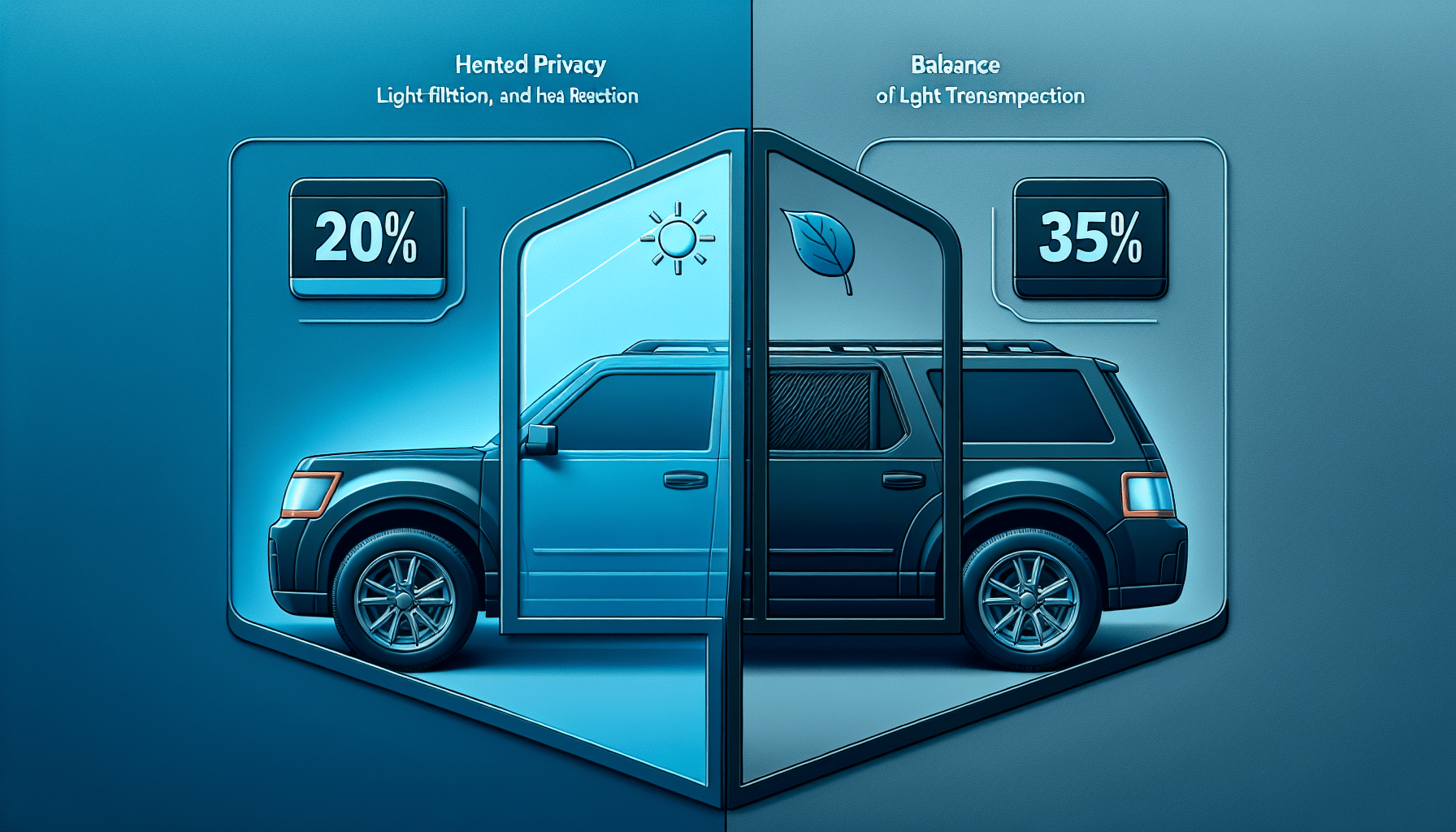Understanding Tint Percentage: A Quick Overview
When it comes to tinting your vehicle’s windows, the percentage refers to the amount of light that can pass through the tint film. The lower the percentage, the darker the tint. Higher percentages mean lighter tints, allowing more light to penetrate.
The Difference Between 20% and 35% Tint
The main difference between a 20% tint and a 35% tint lies in the darkness of the tint. A 20% tint is darker than a 35% tint, meaning less light can pass through the film. This results in increased privacy and heat rejection compared to a 35% tint, which lets in more light.
Legal Considerations
Before deciding on a tint percentage for your vehicle, it’s essential to check the laws and regulations in your state. Each state has specific guidelines regarding how dark you can tint your windows. In some states, a 20% tint may be illegal, while a 35% tint might be within legal limits. Make sure to research the rules in your area to avoid any fines or legal issues.
Light Transmission Levels
Understanding how much light a tint allows through is crucial for both aesthetics and functionality. A 20% tint blocks 80% of light, while a 35% tint blocks 65% of light. This means that a 20% tint offers more privacy and heat reduction than a 35% tint. Consider your personal preferences and needs when choosing the right tint percentage for your vehicle.
Benefits of 20% Tint
Increased Privacy
One of the primary advantages of a 20% tint is the enhanced privacy it provides. With less light passing through the film, the interior of your vehicle is shielded from prying eyes. This is especially beneficial if you often have valuables in your car or want to protect your passengers’ privacy.
Heat Rejection
A 20% tint offers superior heat rejection compared to lighter tints. By blocking 80% of light, the film helps keep your vehicle’s interior cooler, reducing the need for excessive air conditioning. This can make a significant difference, especially in hot climates or during the summer months.
UV Protection
UV rays from the sun can not only damage your vehicle’s interior but also pose a risk to your health. A 20% tint provides excellent UV protection, shielding you and your passengers from harmful radiation. This can help prevent fading and cracking of your upholstery and reduce the risk of skin damage from prolonged exposure to sunlight.
Benefits of 35% Tint
Balance of Light and Privacy
A 35% tint strikes a balance between light transmission and privacy. While it offers less privacy than a 20% tint, it still provides a level of protection by blocking 65% of light. This makes it a popular choice for those who want some tinting benefits without going too dark.
Reduced Glare
Tinted windows can help reduce glare from the sun and headlights, creating a more comfortable driving experience. A 35% tint allows more light into the vehicle, making it easier to see outside while still minimizing glare. This can improve visibility and safety on the road, especially during bright sunny days or nighttime driving.
Legal Compliance
In some states, a 35% tint falls within legal limits, making it a practical choice for those who want to tint their windows without risking fines or penalties. If you’re concerned about following regulations, a 35% tint may be the ideal option for your vehicle.
Making the Right Choice for Your Vehicle
Consider Your Needs
When choosing between a 20% and 35% tint, consider your specific needs and preferences. If privacy and heat rejection are top priorities for you, a 20% tint may be the best option. However, if you want a balance of light transmission and some tinting benefits, a 35% tint could be more suitable.
Consult with Professionals
To ensure you make the right decision for your vehicle, consider consulting with tinting professionals. They can provide expert advice based on your vehicle type, driving habits, and local regulations. A professional assessment can help you determine the optimal tint percentage that meets your requirements and complies with the law.
Test Samples
If you’re unsure about which tint percentage to choose, ask the tinting service for samples to test on your vehicle. Seeing how different percentages look on your windows can help you visualize the level of tint and its impact on light transmission and privacy. Testing samples can give you a better idea of which option suits your vehicle and your preferences.
Conclusion
When deciding between a 20% and 35% tint for your vehicle, it’s essential to consider factors such as privacy, heat rejection, light transmission, and legal compliance. Each tint percentage offers its unique benefits, so make sure to weigh your needs and preferences carefully before making a decision. By understanding the differences between tint percentages and their advantages, you can select the option that best suits your lifestyle and enhances your driving experience. Whether you choose a 20% tint for maximum privacy and heat rejection or a 35% tint for a balance of light and protection, Xclusive Wraps and Tint is here to help you achieve the perfect tint for your vehicle.



